By Bullion Shark LLC ……
Though they aren’t worth much on their faces, pennies are some of the most fun coins to chase as a collector. That said, there’s a big difference between common pennies that might not be worth your time and those with historical and collectible value.
Wheat cents (or wheat pennies as some call them) are some of the most sought-after one-cent coins. Wheat cents are one-cent coins that were made by the United States Mint from the years of 1909 to 1958. They’re called “wheat cents” because the reverse of each coin includes a wreath of wheat. The phrases “One Cent” and “United States of America” can be seen in between the wheat sheaves.
Since wheat cents were minted for quite a while, there are millions of potential coins to chase after. Here are seven of the rarest — and therefore some of the most valuable — wheat cents to check out.
1. 1931-S Lincoln Wheat Cent
In 1931, the San Francisco Mint created a series of Abraham Lincoln wheat pennies. Notably, these pennies were only minted in quantities of up to 866,000, which is much lower than the average mintage (typically in the millions).
Since this cent was hoarded by people due to the dramatic economic uncertainty of the Great Depression, you can sometimes purchase uncirculated-grade variations of this coin.
2. 1943 Bronze Cent
The 1943 copper cent, also sometimes called the 1943 bronze cent, is one of the most sought-after coins in all of America. The bronze wheat cent was produced because of an industrial need for copper during World War II.
At this time, the United States Mint stopped using copper for its cents and switched to zinc-coated steel cents instead. That said, a few copper planchets were left in the hopper, so they were used to strike 1943 dies, resulting in rare copper 1943 Lincoln wheat cents.
These can be fraudulent, however. Use a magnet and see if it picks up the cent if you suspect a fake. If the cent is attracted to the magnet, it’s likely counterfeit.
3. 1914-D Wheat Cent
The 1914-D wheat cent was minted in Denver, and it’s arguably the most valuable non-error cent sought after by collectors. Only a little over 1,193,000 were minted in total, making it quite rare compared to other cents of its type.
It’s tough to find uncirculated varieties of these coins, but it’s popular nonetheless. Some of these cents have sold for over $150,000 USD in high grades.
4. 1922 No D Wheat Cent
The 1922 No D Lincoln wheat cent was produced by the Denver Mint. But notably, it doesn’t actually have the “D” mint mark as indicated by its name. The mint in Denver was under a lot of pressure to produce tons of coins at the time, so sloppy processes interfered with perfect coin creation.
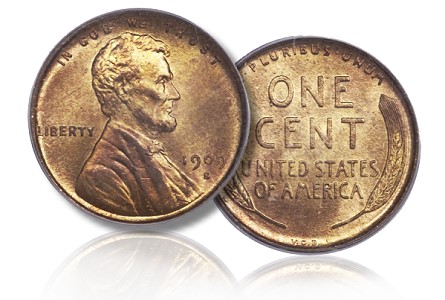
5. 1909-S VDB Wheat Cent
The 1909-S VDB wheat cent was minted in San Francisco. This is one of the toughest wheat cents to acquire – though it is also one of the most popular). It’s marked by the iconic “VDB” initials of the coin’s designer, Victor David Brenner, at the bottom of the coin’s reverse side.
Unfortunately, because this coin can be counterfeited quite easily, you’ll want any potential cents of this type to be authenticated before adding them to your collection.
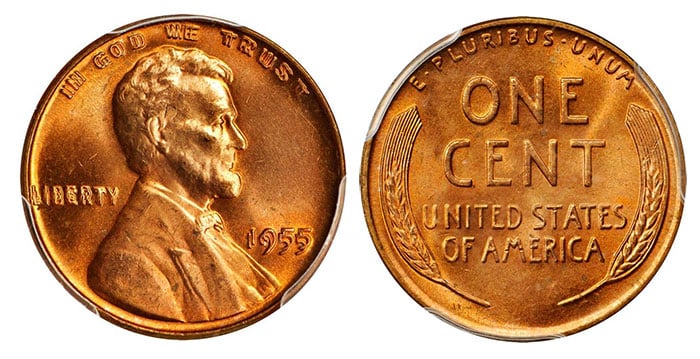 6. 1955 Doubled Die
6. 1955 Doubled Die
The United States Mint’s coin operators in Philadelphia must have been seeing double when these coins came off the presses. The doubling is clearly visible on all of the lettering of the 1955 doubled die, making it one of the most visually striking varieties issued over the course of the fifty-year long series.
While most collectors would be satisfied to own an example in any grade, examples in Mint State with full original red sell for $10,000 and up!
7. 1944 Steel Cent
The 1944 steel wheat cent was an accidental cent made when steel blanks — either from foreign coins or left behind from minting processes in the year prior –— were mixed in with copper blanks and struck with cent designs.
As a result, these steel cents look silver, making them rare and quite aesthetically pleasing to look at. There are only approximately 25 to 30 of these rare pennies, so if you find one, hold onto it!
When it comes to collecting wheat pennies or other rare coins, you should know a few things to identify rare coins quickly and make the most of your collection.
Generally, rare coins, whether they be nickels, dimes, or pennies, have a higher numismatic value the fewer that were minted and the older that they are. For example, if you have a mint condition coin from the Carson City Mint, it may be more valuable than a coin from the Philadelphia Mint.
Some wheat pennies are also rare because of minting errors. Some wheat pennies were made with errors–like those lacking mint marks from their minting facilities, above–which also makes them rare and much more valuable for collectors.
Coins are also valued based on their grade on the U.S. coin grading scale. Grading services use the Sheldon 70-point scale to assign ratings to rare coins based on factors like eye appeal, surface imperfections, age, etc.
Grading isn’t the exclusive domain of big companies. You should read up on coin grading so you can determine what a rare coin will likely receive once it is graded by a numismatist at a third-party organization.
Wheat Cent Values: How Much Is an Average Wheat Cent Worth?
The typical wheat cent from a common date, provided that it is in uncirculated condition, is worth around 50 cents, which is a 50x increase from face value. Wheat cents were only made between the years 1909 to 1958.
This design was first minted to commemorate President Abraham Lincoln’s 100th birthday anniversary. They are printed with the phrases “In God We Trust” and “Liberty” on the front and “E Pluribus Unum” on the back.
Wheat cents are not universally made of valuable materials like bronze or copper. For example, the first wheat cents were made of bronze, which is an alloy that is 95% copper and 5% tin or zinc alloy. In 1943, new wheat pennies were made with zinc-plated steel instead.
Wheat cents produced a bit of controversy shortly after entering circulation, however, due to the initials “VDB” at the bottom. The Mint ordered the initials removed, although they were reinstated in 1918 and placed below Lincoln’s shoulder. The wheat cent was removed from circulation on the 150th anniversary of Abraham Lincoln’s birth.


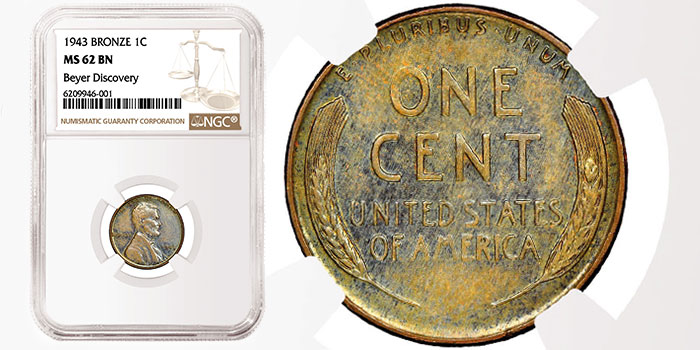
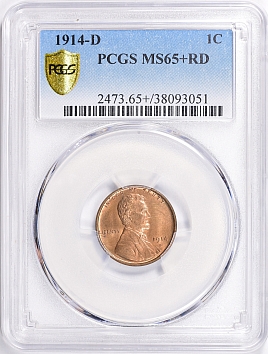
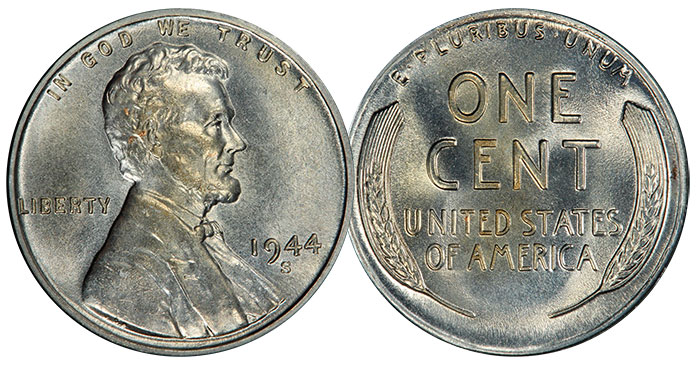



The statement that “[t]he wheat cent was removed from circulation on the 150th anniversary of Abraham Lincoln’s birth.” could easily be misinterpreted.
Wheat cents of course were not demonetized or otherwise formally withdrawn by the Treasury. Their _production_ ended in 1958, with 1959 and later cents displaying a new reverse featuring the Lincoln Memorial design. Older cents remained in use as has been the case with nearly every US coin following a design change.
I have a penny that is blanked on both sides.
How do I sale some of these wheat pennies?
The Unless they’re rare issues like those profiled in this article and/or in superb condition, you’re unlikely to be able to _sell_ [“sale”] most wheat cents. Despite their age, wheat cents dating back to the mid-1930s generally don’t carry a major premium. You might be able to trade them to a young collector who’s just starting out, or shop them around at a local coin show.
Who do I contact if I find any of these rare pennies in my mom’s collection of coins which I inherited just recently when she passed away she had been collecting coins for over 60 years and we also lived in Puerto Rico in the early 1970s
I have wheat pennies copper n some silver how do I find out what they are worth?
There aren’t any silver wheat cents. What you almost certainly have are 1943 wartime cents that were struck in zinc-plated steel because copper was needed to make ammunition.
What you should do depends on what coins you have – their dates, mint marks, and conditions are key to establishing values. You can get a VERY rough idea by looking at a source like the so-called “Red Book”, i.e. A Guide to United States Coins, that shows nearly every US coin ever made and includes pictures that can help estimate condition. Of course any final call on value has to be left up to experts.
I have a 1944 steel wheat head
You’ll need to perform a couple of at-home tests before running up any flags.
Only a tiny number of genuine 1944 wheat (rather than “wheat head”) cents are known. If your coin is actually dated 1943, it’s a much more common coin worth maybe 50¢ to $1 depending on condition. If it does say 1944 see if it sticks to a magnet. If it doesn’t, it’s likely to be an ordinary bronze cent that was plated. If it _does_ stick you should have it examined by professionals.
How can I get some one to look at my coins and give an honest opinion on what there worth ..I would like to action off my coins
I would like for someone to look at my penny’s and to tell me the truth and I have a 1926 to.
I have a 1942 wheat penny what is it worth
Unless it’s in top condition it’s only worth in the 3 to 10 cent range. 1942 isn’t a rare date.
I need help having my 1943 copper penny (yes I know the rarity and estimated worth if real) It is completely non-magnetic, has not been altered from a “48” and does not have the characteristics of a counterfeit made by that weird electro-whatever erosion die…
Authentication requires an in-person inspection. If you can find a major coin show where people from one of the big agencies like ANA, PCGS, etc. are attending you can show it to them. Alternately you should contact one of these firms to find out out how to submit your coin for examination.
It sounds as if you’ve done some pretty thorough tests, more than most people do. Were you able to check your coin’s weight as well?
I have 2 1952 wheat pennies one doesnt have a mark . A 1929 with a mark, a 1946 no mark and 1946 with mark. 1947 with mark.
And was wondering who can give me a value
What there worth. Also have a buffalo nickel with no date.
I have one for you guys, wish I could add a photo here, but I have a S935 penny. Now before you think that I’ve made a typo and might, 1935, no. Where there should be a numeral 1, there’s a “S”. . So that it reads S935
Take a picture of it and go from that point. I have not heard of one like that. Keep it protected.
I’ve got lots of coins too but who do I contact?
What are error pennies worth I have a collection